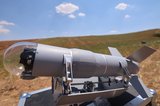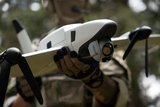ASTM UAV Committee Approves New Flight Authority Guide, Launches Work on Proposed Recovery System Standard
Subcommittee F38.01 on Airworthiness, part of ASTM International Committee F38 on Unmanned Air Vehicle Systems, has approved a new standard for flight authority and is currently working on a proposed standard that covers UAS recovery systems. Subcommittee F38.01 welcomes participation in its ongoing standards development activities.
ASTM F2690 - Flight Authority
Gerry Marsters, president, AeroVations Inc., and an F38 committee member, says that the new standard, F2690, Guide for Suggested Procedures for Applying for a Flight Authority for an Unmanned Aircraft System: Part I and Part II, will serve as an entry point into the complex world of aviation regulation.
According to Marsters, developers and operators of unmanned aircraft systems can use F2690 to find additional regulatory material that is sometimes easily overlooked and to help determine potential costs that will be associated with securing permission to operate a new design. "The primary users will be small developers who create new designs but who lack extensive aerospace design experience or experience in working with aviation regulations," says Marsters.
Marsters encourages users to comment to the committee on the new standard. Initial revisions will be considered from these comments to ensure that the standard remains relevant and useful.
WK15881 - Recovery Systems
All interested parties are invited to participate in the development of a proposed new ASTM International standard, WK15881, Specification for Design and Performance of UAS Recovery Systems. WK15881 is under the jurisdiction of Subcommittee F38.01 on Airworthiness, part of ASTM International Committee F38 on Unmanned Air Vehicle Systems.
The proposed standard will provide a specification for design, manufacturing and testing of recovery systems for unmanned aircraft. Committee F38 has developed a standard for launchers (F2585, Specification for Design and Performance of Pneumatic-Hydraulic Unmanned Aircraft System (UAS) Launch System), but currently no standards exist for recovery systems. The proposed standard will provide a complement to F2585, as well as work toward completing a suite of standards for the overall airworthiness and operation of unmanned air vehicle systems.
ASTM International standards are available for purchase from Customer Service (phone: 610-832-9585; [email protected]) or at www.astm.org.
For technical Information, contact (F2690) Gerald Marsters, AeroVations Inc., Ottawa, Ontario, Canada (phone: 613-837-9326; [email protected]); (WK15881) Richard Caban, Engineered Arresting Systems Co., Aston, Pa. (phone : 610-494-8000; [email protected]). Committee F38 meets May 17-19, 2009, during the May committee week in Vancouver, British Columbia, Canada. For ASTM meeting or membership information, contact Daniel Schultz, ASTM International (phone: 610-832-9716; [email protected]).
Established in 1898, ASTM International is one of the largest international standards development and delivery systems in the world. ASTM International meets the World Trade Organization (WTO) principles for the development of international standards: coherence, consensus, development dimension, effectiveness, impartiality, openness, relevance and transparency. ASTM standards are accepted and used in research and development, product testing, quality systems and commercial transactions around the globe.
More from Uncrewed Vehicles
-
![What's next for the Pentagon after the Replicator programme?]()
What's next for the Pentagon after the Replicator programme?
Although the Replicator initiative has made several accomplishments, there are still multiple gaps to plug across the US Department of Defense (DoD) and its services.
-
![Cummings Aerospace showcases Hellhound loitering munition designed for US Army’s LASSO programme (video)]()
Cummings Aerospace showcases Hellhound loitering munition designed for US Army’s LASSO programme (video)
Cummings Aerospace presented its turbojet-powered Hellhound loitering munition at SOF Week 2025, offering a man-portable solution aligned with the US Army’s LASSO requirements.
-
![SOF Week 2025: PDW unveils attritable FPV drone for SOF operations at scale]()
SOF Week 2025: PDW unveils attritable FPV drone for SOF operations at scale
PDW has revealed its Attritable Multirotor First Person View drone at SOF Week 2025, offering special operations forces a low-cost, rapidly deployable platform for strike and ISR missions, inspired by battlefield lessons from Ukraine.
-
![SOF Week 2025: Teledyne FLIR white paper provides guidance on reusable loitering munitions]()
SOF Week 2025: Teledyne FLIR white paper provides guidance on reusable loitering munitions
Teledyne FLIR is highlighting the emerging requirements for 'recoverable and re-usable' loitering munitions across the contemporary operating environment during this week’s SOF Week conference in Tampa, Florida.
-
![SOF Week 2025: Kraken Technology group debuts K3 Scout USV in North America]()
SOF Week 2025: Kraken Technology group debuts K3 Scout USV in North America
High-performance maritime industry player Kraken Technology Group, based in the UK, has used the SOF Week conference in Tampa, Florida this week to debut its K3 Scout uncrewed surface vessel (USV) to the North American market.
-
![Palladyne AI and Red Cat to demonstrate capabilities for autonomous drone swarms to the US military]()
Palladyne AI and Red Cat to demonstrate capabilities for autonomous drone swarms to the US military
Red Cat and Palladyne AI recently conducted a cross-platform collaborative flight involving three diverse heterogeneous drones.

























